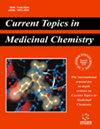Phytochemical Profile and Antioxidant and Protective Activities of Various Types of Extracts from Hyssopus officinalis L. and Grindelia robusta Nutt. Herb Grown in Poland
IF 2.9
4区 医学
Q3 CHEMISTRY, MEDICINAL
Current topics in medicinal chemistry
Pub Date : 2024-08-28
DOI:10.2174/0115680266319052240819104310
引用次数: 0
Abstract
Introduction: The available literature indicates that Hyssopus officinalis and Grindelia robusta are raw materials with great potential for use in prevention and therapy. Therefore, the aims of this study were to assess the phytochemical profile and antioxidant and cytoprotective properties of extracts prepared using various solvents, additionally taking into account different methods of drying the plant material. Methods: Hydrodistilled oil was analysed by GC-MS. The chemical composition of the extracts was estimated by spectrophotometry and the HPLC–DAD method. Antioxidant activity was evaluated using DPPH and FRAP and measuring the intracellular level of ROS. Alamar Blue and Neutral Red tests were used to assess the cytotoxicity of the extracts on skin cells - keratinocytes and fibroblasts. Results: The major components of hyssop essential oil were cis- (44.9%) and trans- (18.2%) pinocamphone, while borneol (16.1%), and α-pinene (12.0%) were predominant in grindelia essential oil. Flavonoids were dominant in the extracts (water:ethanol, water:methanol, and water: glycerol) from hot-air dried hyssop herb, while phenolic acids were the predominant compounds in the grindelia herb extracts. The water:ethanol hyssop extract had the highest total content of flavonoids (42.26 mg CE/mL), among which isoquercitrin and rutin were present in the highest quantities (32.61 mg/mL and 21.47 mg/mL, respectively). In the case of grindelia, the highest total phenolic acid content (26.24 mg CAE/mL) was recorded in the water:ethanol extract, and the dominant compounds among them were 1,5-dicaffeoylquinic and chlorogenic acid (10.85 and 6.39 mg/mL, respectively). The water:ethanol extract from both plants also exhibited the highest antioxidant activity in the DPPH and FRAP tests (79.19% and 1.39 mmol/L, respectively, for grindelia and 67.61% and 1.04 mmol/L for hyssop) and was most effective at reducing the level of ROS in cells. In addition, water:ethanol extracts may have a positive impact on the viability of skin cells in vitro. Conclusion: Water:ethanol extracts from H. officinalis and G. robusta herb are promising sources of active compounds and may find application as natural materials with valuable biological properties, which require further in vitro and in vivo testing.从 Hyssopus officinalis L. 和 Grindelia robusta Nutt.波兰种植的草本植物
导言:现有文献表明,Hyssopus officinalis 和 Grindelia robusta 是极具预防和治疗潜力的原材料。因此,本研究旨在评估使用不同溶剂制备的提取物的植物化学成分、抗氧化性和细胞保护性,同时考虑到植物材料的不同干燥方法。方法:采用 GC-MS 对水蒸馏油进行分析。通过分光光度法和 HPLC-DAD 法估算提取物的化学成分。使用 DPPH 和 FRAP 评估抗氧化活性,并测量细胞内的 ROS 水平。阿拉玛蓝和中性红测试用于评估提取物对皮肤细胞--角质细胞和成纤维细胞--的细胞毒性。结果百日草精油的主要成分是顺式(44.9%)和反式(18.2%)蒎烷,而研磨精油中主要是龙脑(16.1%)和α-蒎烯(12.0%)。黄酮类化合物在热风干燥的百日草提取物(水:乙醇、水:甲醇和水:甘油)中占主导地位,而酚酸类化合物则是研磨草提取物中的主要化合物。水:乙醇百日草提取物中黄酮类化合物的总含量最高(42.26 毫克 CE/毫升),其中异槲皮素和芦丁的含量最高(分别为 32.61 毫克/毫升和 21.47 毫克/毫升)。磨芋的水乙醇提取物中总酚酸含量最高(26.24 毫克 CAE/毫升),其中最主要的化合物是 1,5-二咖啡酰奎宁酸和绿原酸(分别为 10.85 毫克/毫升和 6.39 毫克/毫升)。在 DPPH 和 FRAP 试验中,这两种植物的水乙醇提取物也表现出最高的抗氧化活性(苦参碱的抗氧化活性分别为 79.19% 和 1.39 毫摩尔/升,百日草的抗氧化活性分别为 67.61% 和 1.04 毫摩尔/升),在降低细胞中的 ROS 水平方面最为有效。此外,水:乙醇提取物可能会对体外皮肤细胞的活力产生积极影响。结论从百日草和罗布麻中提取的水乙醇萃取物是很有前景的活性化合物来源,可作为具有宝贵生物特性的天然材料加以应用,但还需要进一步的体外和体内测试。
本文章由计算机程序翻译,如有差异,请以英文原文为准。
求助全文
约1分钟内获得全文
求助全文
来源期刊
CiteScore
6.40
自引率
2.90%
发文量
186
审稿时长
3-8 weeks
期刊介绍:
Current Topics in Medicinal Chemistry is a forum for the review of areas of keen and topical interest to medicinal chemists and others in the allied disciplines. Each issue is solely devoted to a specific topic, containing six to nine reviews, which provide the reader a comprehensive survey of that area. A Guest Editor who is an expert in the topic under review, will assemble each issue. The scope of Current Topics in Medicinal Chemistry will cover all areas of medicinal chemistry, including current developments in rational drug design, synthetic chemistry, bioorganic chemistry, high-throughput screening, combinatorial chemistry, compound diversity measurements, drug absorption, drug distribution, metabolism, new and emerging drug targets, natural products, pharmacogenomics, and structure-activity relationships. Medicinal chemistry is a rapidly maturing discipline. The study of how structure and function are related is absolutely essential to understanding the molecular basis of life. Current Topics in Medicinal Chemistry aims to contribute to the growth of scientific knowledge and insight, and facilitate the discovery and development of new therapeutic agents to treat debilitating human disorders. The journal is essential for every medicinal chemist who wishes to be kept informed and up-to-date with the latest and most important advances.

 求助内容:
求助内容: 应助结果提醒方式:
应助结果提醒方式:


